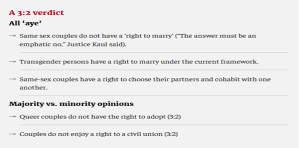(Newspapers, PIB and other important sources)
Prelim and Main
1. Uttarakhand tables Uniform Civil Code Bill amid Opposition protest READ MORE
2. In zodiacal dust mystery, PRL Ahmedabad study points to a familiar source READ MORE
3. India’s tax-to-GDP ratio to hit a record high of 11.7% of GDP in 2024-25: Revenue Secretary READ MORE
4. EC rules Ajit faction is real NCP, Sharad Pawar faction will go to Supreme Court READ MORE
5. How the Uniform Civil Code came to be included in the Indian Constitution READ MORE
6. Weather disasters behind 95% natural calamities in 2023 that cost over $1 billion, finds report READ MORE
7. A new virus-like entity has just been discovered – ‘obelisks’ explained READ MORE
8. Hindu Kush Himalaya is a ‘biosphere on the brink’: ICIMOD READ MORE
Main
GS Paper- 1
1. Role of diaspora in furthering India’s religious nationalism globally READ MORE
2. Population priorities: On Interim Budget statement and the Census READ MORE
3. The Earth’s tectonic plates made the Himalayas — and could rip them apart READ MORE
4. Deep Seabed Mining in the Arctic READ MORE
GS Paper- 2
POLITY AND GOVERNANCE
1. Travesty in Chandigarh: On mayoral election and the Supreme Court of India’s remarks READ MORE
2. The severe erosion of fiscal federalism READ MORE
3. The Union’s reins on financial transfers to States READ MORE
SOCIAL ISSUES
1. A failed attempt at denying backward groups their place in India’s universities READ MORE
2. Are Anganwadis ready to provide quality early childhood education? READ MORE
3. Going Beyond the Gap in Foundational Skills, ASER 2023 Report Raises 3 Important Questions READ MORE
INTERNATIONAL ISSUES
1. Active non-alignment in a changing world READ MORE
2. NAM at a crossroads: Analysing India’s diplomatic choices and priorities READ MORE
3. Maldives, China and a challenge to India’s soft power diplomacy READ MORE
4. India–Maldives Ties in Choppy Waters READ MORE
GS Paper- 3
ECONOMIC DEVELOPMENT
1. Mint Street musings: On the interim Budget and the RBI READ MORE
2. Wages of inequality: The income-growth gap READ MORE
3. Bond route to improving female presence in labour READ MORE
4. High tide of youth unemployment: Joblessness among the youth cannot be addressed through fiat READ MORE
5. Can India overtake the US economy? READ MORE
6. India’s infrastructure sector has a skilled labour problem READ MORE
ENVIRONMENT AND ECOLOGY
1. Delhi’s waste needs to be managed better READ MORE
2. Sustaining cities amid climate change READ MORE
SCIENCE AND TECHNOLOGY
1. The perilous age of disinformation READ MORE
INTERNAL SECURITY
1. China’s ‘Three Warfares’ Strategy in Action: Implications for the Sino-India Boundary, the Arctic, and Antarctica READ MORE
DISASTER MANAGEMENT
1. In Morbi’s debris, the role of the State in PPP projects READ MORE
GS Paper- 4
ETHICS EXAMPLES AND CASE STUDY
1. Power of silence READ MORE
2. Supreme Court’s ‘murder of democracy’ remarks on Chandigarh mayor polls give ammo to Oppn READ MORE
3. To link or delink neural connections READ MORE
Questions for the MAIN exam
1. The power to make laws on, administer and determine aspects of the public debt of the State falls squarely on the State Legislature, and borrowing restrictions in States is an example of ‘annihilative federalism’. Critically Examine.
2. Budget management of the State is the discretion of the State government and it cannot be ceded to the Union executive and Parliament in the name of fiscal management. Examine the statement in the light of recent stand-off between Kerala and Center.
3. The character of India’s federalism is moving rapidly from cooperative to destructive and annihilation, and recent borrowing restrictions are an example of ‘annihilative federalism’ at play. Critically examine.
4. Climate change poses a significant threat to the country in the coming decades and to address these challenges effectively, the Republic’s current structure needs to evolve by encouraging the devolution of powers to local government bodies (LGBs). Comment.
5. While, in 1993–94, attempts were made to devolve power to local authorities, the onus of decentralisation fell onto state governments, which lacked incentives to do so, and this setup diminished accountability and undermined governance objectives. Examine.
6. For an effective delivery system, the Indian Republic must be re-envisioned in such a way that the Union and states act as facilitators and coordinators of major policy challenges and imagine Local Government Bodies as public service delivery units. Comment.
7. The Indian Constitution has provided a framework for India’s enduring success as a unified nation with a vibrant democracy but it must evolve to grapple with the key challenges of the 21st century and for which a new approach that encourages devolution of power is the need of the hour. Comment.
QUOTATIONS AND CAPTIONS
- The pre-eminent obstacle to peace is Israel’s colonisation of Palestine.
- Only a verdict invalidating the election and ordering a fresh one, with safeguards against manipulation, will be in the interest of justice.
- Borrowing restrictions in States provide an example of ‘annihilative federalism’.
- With foreign capital inflows into Indian government bonds likely to spike following their inclusion in global bond indices, banks which are the major holders of these securities and are facing elevated credit to deposit ratio growth rates, should get more space to lend.
- All activities related to public accounts fall within the domain of the State Legislature and the Centre has no power to include the withdrawals from public accounts in the Net Borrowing Ceiling (NBC).
- Budget management of the State is the discretion of the State government. The territory occupied by the State executive and legislature cannot be ceded to the Union executive and Parliament in the name of fiscal management.
- The State’s responsibility to fund development work cannot come in the way of it delivering justice to pensioners and beneficiaries.
- Not permitting the State to borrow will affect the State’s spending on welfare schemes and it can lead to a catastrophic situation in the revenue-scarce State.
- The character of India’s federalism is moving rapidly from cooperative to destructive and annihilation, and recent borrowing restrictions are an example of ‘annihilative federalism’ at play.
- The Union government’s moves, which reduce the aggregate financial transfers to States, are weakening cooperative federalism.
- Gap between wage and GDP growth indicates a worsening of income distribution as well as weak improvements in welfare.
- Outcome-based financing tools like Development Impact Bonds show promise in addressing skilling challenges for Indian women.
- With local governments bearing the brunt of public service delivery, the Republic must be re-envisioned in such a way that the Union and states act as facilitators and coordinators of major policy challenges and imagine Local Government Bodies as public service delivery units.
- While Indian Republic has fulfilled its intended ambitions of nurturing national unity and democracy, it needs to empower lower levels of government to tackle 21st century challenges.
- Climate change poses a significant threat to the country in the coming decades, with the country being vulnerable to cyclones, heatwaves, flooding, and air pollution.
- While attempts were made in 1993–94 to devolve power to lower authorities, the onus of decentralisation fell onto state governments, which lacked incentives to do so.
- For an effective delivery system, the Indian Republic must be re-envisioned in such a way that the Union and states act as facilitators and coordinators of major policy challenges and imagine Local Government Bodies as public service delivery units as local governments bearing the brunt of service delivery.
ESSAY TOPIC
- Happiness is when what you think, what you say, and what you do are in harmony.
50-WORD TALK
- How consenting adults live and love is nobody’s business; certainly not the state’s. That couples wishing to live together must seek permission in Uttarakhand is a stunning erosion of individual liberties. The state is forcing itself into people’s bedrooms. Moral vigilantes will get a free-for-all, push India back in time.
- Karnataka has joined Kerala, Tamil Nadu and Telangana in protesting Centre’s tax devolution policies. The timing works since 16th Finance Commission’s deliberations have just started. But such concerted criticism is another sign of worsening Centre-State relations. If the Centre is serious about fiscal federalism, it needs to rebuild states’ trust.
Things to Remember:
- For prelims-related news try to understand the context of the news and relate with its concepts so that it will be easier for you to answer (or eliminate) from given options.
- Whenever any international place will be in news, you should do map work (marking those areas in maps and exploring other geographical locations nearby including mountains, rivers, etc. same applies to the national places.)
- For economy-related news (banking, agriculture, etc.) you should focus on terms and how these are related to various economic aspects, for example, if inflation has been mentioned, try to relate with prevailing price rises, shortage of essential supplies, banking rates, etc.
- For main exam-related topics, you should focus on the various dimensions of the given topic, the most important topics which occur frequently and are important from the mains point of view will be covered in ED.
- Try to use the given content in your answer. Regular use of this content will bring more enrichment to your writing.






 Mahmudia Region
Mahmudia Region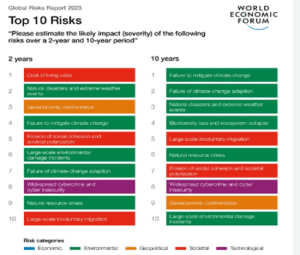
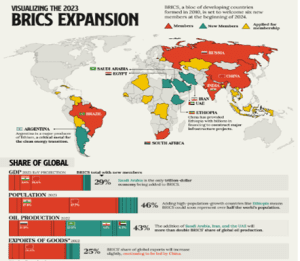
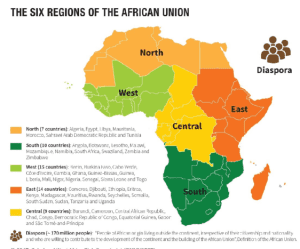


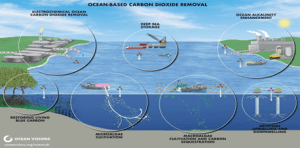




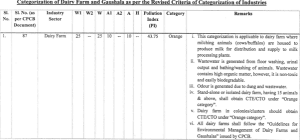
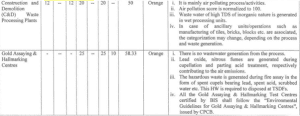

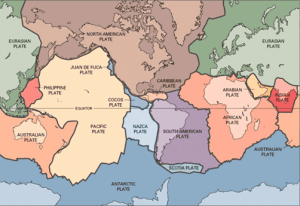
 Solar activity
Solar activity